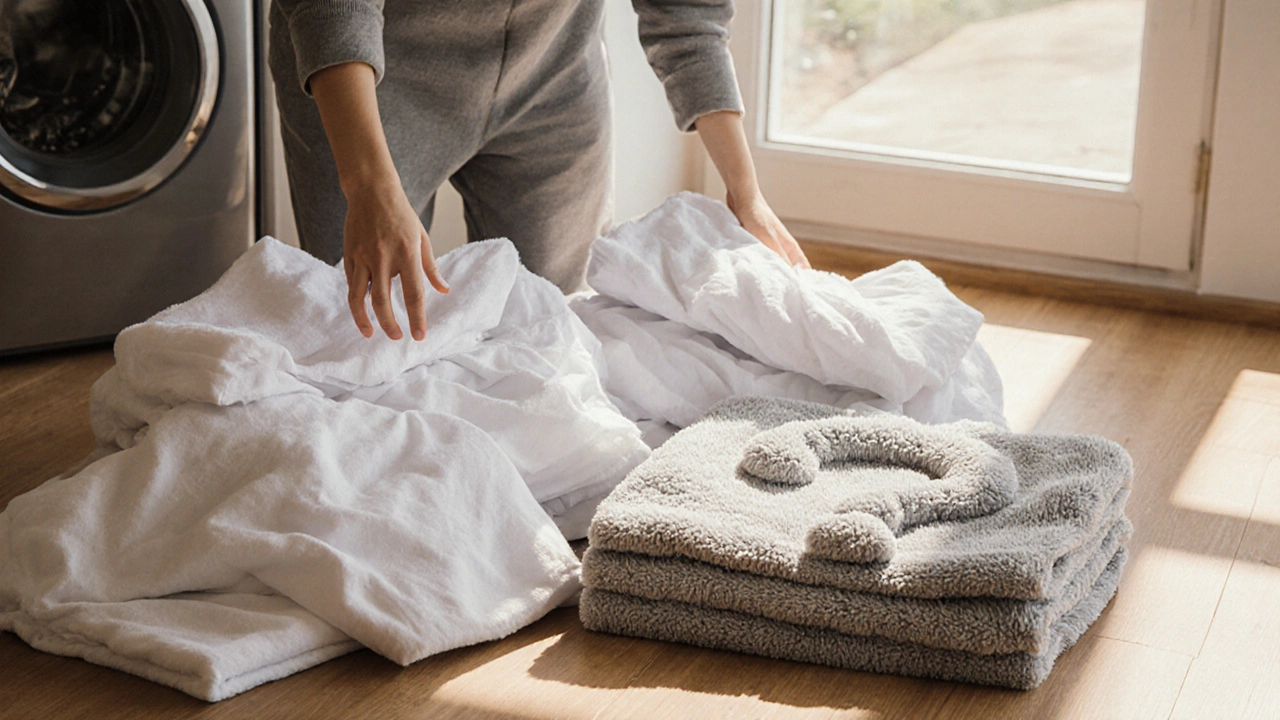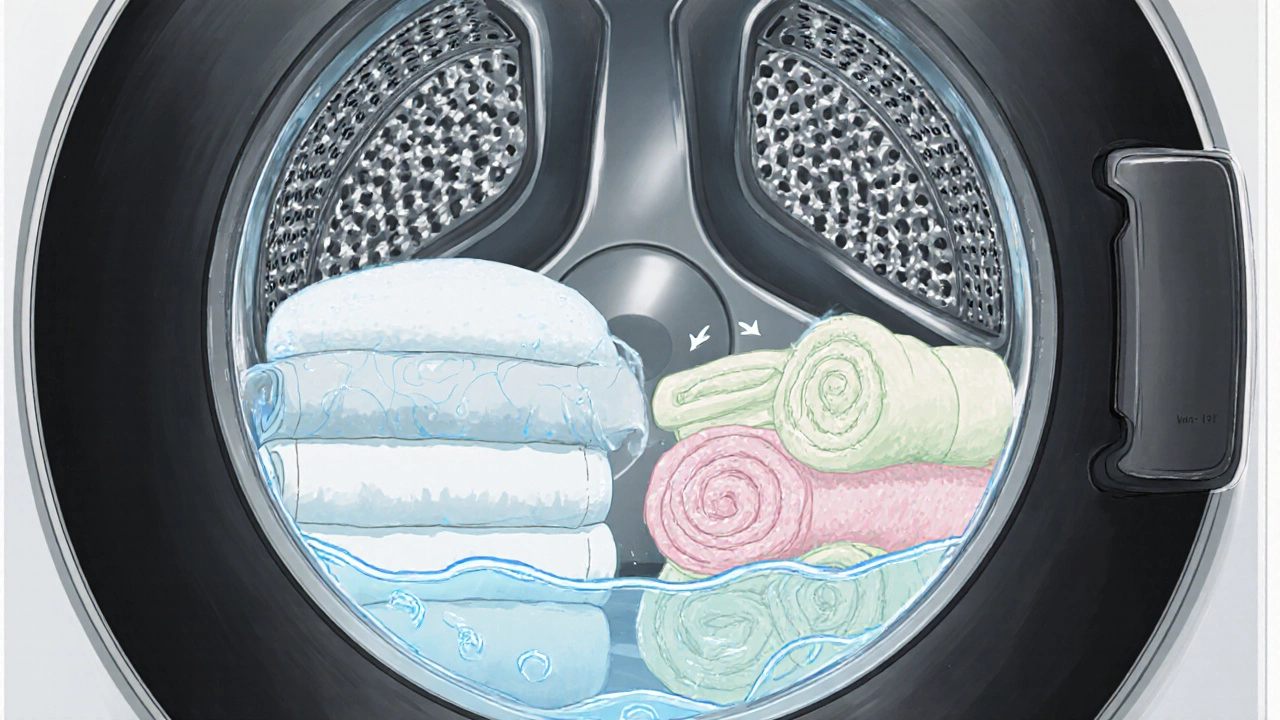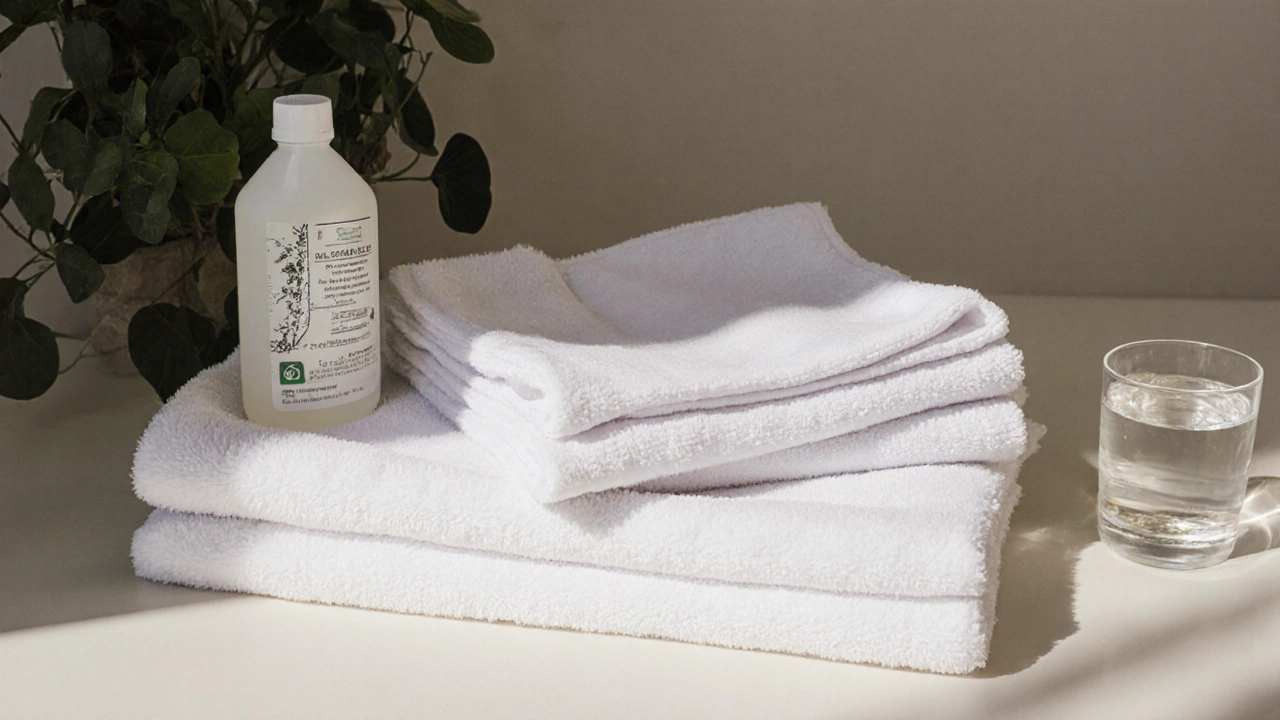Can I Wash Sheets and Towels Together? Expert Laundry Tips
 Oct, 15 2025
Oct, 15 2025
Laundry Compatibility Calculator
Can You Wash Sheets and Towels Together?
Enter your laundry details to get personalized advice based on the latest laundry expert guidelines.
Ever stared at a pile of clean sheets and a stack of fluffy towels and wondered if they can share the same wash cycle? It’s a common dilemma-mixing bedding and bathroom linens could save time, but you risk color bleeding, lint transfer, or even reduced hygiene. Below we break down exactly when it’s safe, how to set your machine, and what pitfalls to avoid so you can keep both sheets and towels fresh without a second load.
Key Takeaways
- Sheets and towels can be washed together if they share similar care labels and you choose the right temperature.
- Use a high‑speed spin and a warm (40‑60°C) cycle to minimize lint and ensure proper cleaning.
- Separate heavily soiled or colored items to prevent dye transfer.
- Don’t overload the washing machine - the appliance that agitates and rinses laundry - ; leave enough room for water to circulate.
- Choose a gentle, enzyme‑based detergent and skip fabric softener for towels.
1. Hygiene Matters: Why Lint and Bacteria Are a Concern
When you toss towels-highly absorbent cotton or microfiber pieces designed to trap moisture-into the same drum as sheets, lint and skin cells can transfer. Towels often carry more bacteria because they stay damp longer. Washing them together isn’t a problem if the cycle reaches at least 40°C (104°F), which kills most common germs. Below that, you risk residual odor and micro‑organisms lingering on both items.
2. Temperature and Cycle: Matching the Right Settings
Temperature is the single biggest factor. Here’s a quick rule of thumb:
- White or light‑colored cotton sheets - 60°C (140°F) for a deep clean.
- Colored sheets - 40°C (104°F) to protect dye.
- Bath towels - 40‑60°C depending on soiling level.
If your sheets and towels share the same temperature range, you can safely combine them. Opt for a “Normal” or “Mixed Fabrics” cycle with an extra rinse to flush out any loosened fibers.
3. Fabric Types and Care Labels
Always read the care tags. Sheets - typically 100% cotton, linen, or a cotton‑blend - recommend a gentler wash than terry‑cloth towels, which are built for high‑temperature cleaning. If you have silk or bamboo sheets, keep them separate; the heat needed for towels can damage delicate fibers.

4. Load Size & Machine Capacity
Overloading the washing machine - the appliance that cleans laundry - compromises water flow, leaving pockets of dampness where bacteria thrive. A good guideline is to fill the drum no more than three‑quarters full. For a standard front‑loader (7kg capacity), this usually means two twin‑size sheet sets plus two to three bath towels.
5. Detergent, Bleach, and Fabric Softener
Enzyme‑based detergents work well on both fabrics, breaking down oils and sweat without harsh chemicals. Avoid chlorine bleach unless your sheets are pure white; it can weaken fibers over time. For towels, skip fabric softener - it reduces absorbency. If you love that fresh scent, add a half‑cup of white vinegar during the final rinse; it deodorizes and keeps towels fluffy.
6. Step‑by‑Step Guide to Washing Sheets and Towels Together
- Sort by color and temperature. Group white sheets with white towels, and similarly for colors.
- Check care labels. Ensure both items tolerate the same max temperature.
- Load the machine, leaving space for movement. A good visual check: you should be able to slide your hand in the drum without crushing the fabrics.
- Add the recommended amount of detergent - an enzyme‑based laundry soap - based on load size.
- Select the appropriate temperature (40‑60°C) and the “Mixed Fabrics” or “Normal” cycle.
- Enable an extra rinse if your machine offers it; this helps remove lint that settles on sheets.
- Once the cycle ends, tumble dry sheets on low heat and towels on medium‑high, or line‑dry if you prefer.

7. Pros and Cons: Should You Combine Loads?
| Aspect | Pros | Cons |
|---|---|---|
| Time | Saves a load, reduces overall laundry day duration. | May require extra rinses, slightly longer cycle. |
| Energy Use | Fewer heats up the dryer, lower electricity bill. | Over‑crowding can lead to inefficient cleaning, needing a repeat wash. |
| Fabric Care | Both cotton items benefit from similar agitation. | Delicate sheet blends can suffer from towel‑induced abrasion. |
| Lint Transfer | Proper spin and extra rinse keep lint minimal. | Without extra rinse, sheets may end up with towel fibers. |
| Hygiene | Warm water kills most microbes on both items. | Cold‑water cycles won’t disinfect effectively. |
8. Common Mistakes and How to Avoid Them
- Mixing colors: Dark towels can bleed onto light sheets. Separate if you’re unsure.
- Skipping the extra rinse: Lint from towels loves to cling to smoother sheet surfaces.
- Using too much detergent: Excess suds trap fibers, making rinsing harder.
- Overloading: Prevents thorough agitation and leaves pockets of dirty water.
- Choosing the wrong cycle: A delicate “hand‑wash” setting won’t spin out enough water for towels.
Frequently Asked Questions
Can I wash white sheets with colored towels?
It’s risky. Colored towels can release dye, especially in warm water. Separate whites and colors unless the towels are certified color‑fast.
What temperature kills most bacteria on towels?
A wash at 60°C (140°F) for 30 minutes is enough to eliminate most common household germs. If you can’t reach that heat, add a laundry sanitizer.
Do I need a special detergent for mixed loads?
A standard enzyme‑based detergent works fine. Avoid bleach on colored sheets and skip fabric softener for towels to retain absorbency.
Should I use the “Heavy Duty” cycle for towels and sheets?
Only if both items are 100% cotton and can handle high agitation. Otherwise, a “Normal” or “Mixed Fabrics” setting is gentler and still cleans well.
How can I reduce lint on my sheets after washing with towels?
Add an extra rinse, clean your lint filter before the cycle, and consider washing sheets inside‑out to protect the smoother surface.